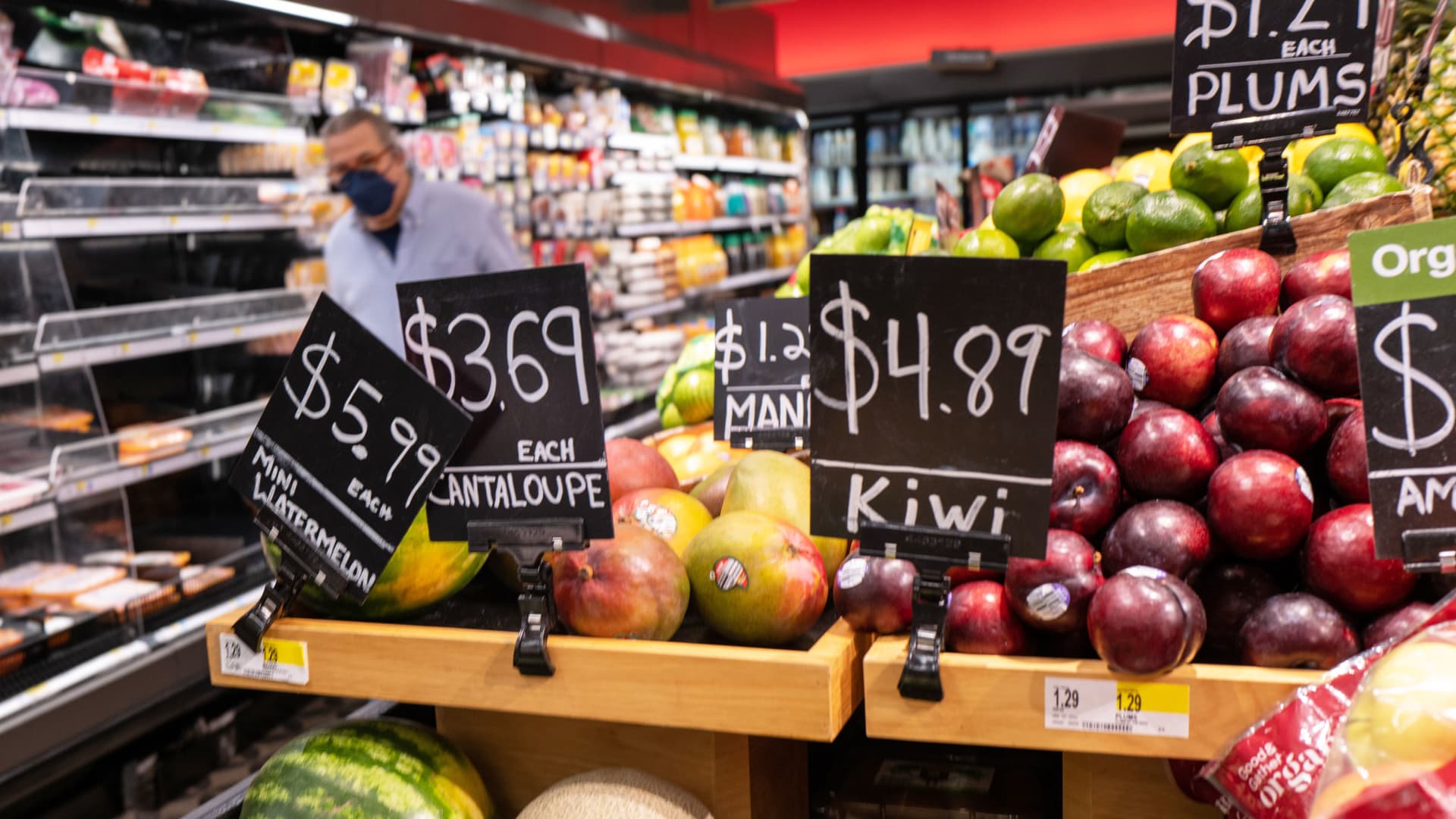Prices that consumers pay for a variety of goods and services rose 8.5% in July from a year ago, a slowing pace from the previous month due largely to a drop in gasoline prices.
On a monthly basis, prices were flat as energy prices broadly declined 4.6% and gasoline fell 7.7%. That offset a 1.1% monthly gain in food prices and a 0.5% increase in shelter costs.
Economists surveyed by Dow Jones were expecting headline CPI to increase 8.7% on an annual basis and 0.2% monthly.
Excluding volatile food and energy prices, so-called core CPI rose 5.9% annually and 0.3% monthly, compared with respective estimates of 6.1% and 0.5%.
Even with the lower-than-expected numbers, inflation pressures remained strong.
The jump in the food index put the 12-month increase to 10.9%, the fastest pace since May 1979. Butter is up 26.4% over the past year, eggs have surged 38% and coffee is up more than 20%.
Despite the monthly drop in the energy index, electricity prices rose 1.6% and were up 15.2% from a year ago. The energy index rose 32.9% from a year ago.
Used vehicle prices posted a 0.4% monthly decline, while apparel prices also fell, easing 0.1%, and transportation services were off 0.5% as airline fares fell 1.8% for the month and 7.8% from a year ago.
Markets reacted positively to the report, with futures tied to the Dow Jones Industrial Average up more than 400 points and government bond yields down sharply.
“Things are moving in the right direction,” said Aneta Markowska, chief economist at Jefferies. “This is the most encouraging report we’ve had in quite some time.”
The report was good news for workers, who saw a 0.5% monthly increase in real wages. Inflation-adjusted average hourly earnings were still down 3% from a year ago.
Shelter costs, which make up about one-third of the CPI weighting, continued to rise and are up 5.7% over the past 12 months.
The numbers indicate that inflation pressures are easing somewhat but still remain near their highest levels since the early 1980s.
Clogged supply chains, outsized demand for goods over services, and trillions of dollars in pandemic-related fiscal and monetary stimulus have combined to create an environment of high prices and slow economic growth that has bedeviled policymakers.
The July drop in gas prices has provided some hope after prices at the pump rose past $5 a gallon. But gasoline was still up 44% from a year ago and fuel oil increased 75.6% on an annual basis, despite an 11% decline in July.
Federal Reserve officials are using a recipe of interest rate increases and related monetary policy tightening in hopes of beating back inflation numbers running well ahead of their 2% long-run target. The central bank has hiked benchmark borrowing rates by 2.25 percentage points so far in 2022, and officials have provided strong indications that more increases are coming.
There was some good news earlier this week when a New York Fed survey indicated that consumers have pared back inflation expectations for the future. But for now, the soaring cost of living remains a problem.
While inflation has been accelerating, gross domestic product declined for the first two quarters of 2022. The combination of slow growth and rising prices is associated with stagflation, while the two straight quarters of negative GDP meets a widely held definition of recession.
Wednesday’s inflation numbers could take some heat off the Fed.
Recent commentary from policymakers has pointed toward a third consecutive 0.75 percentage point interest rate hike at the September meeting. Following the CPI report, market pricing reversed, with traders now anticipating a better chance of a lesser 0.5 percentage point move.
“At the very least, this report takes the pressure off the Fed at the next meeting,” Markowska said. “They’ve been saying they’re ready to deliver a 75 basis point hike if they have to. I don’t think they have to anymore.”
